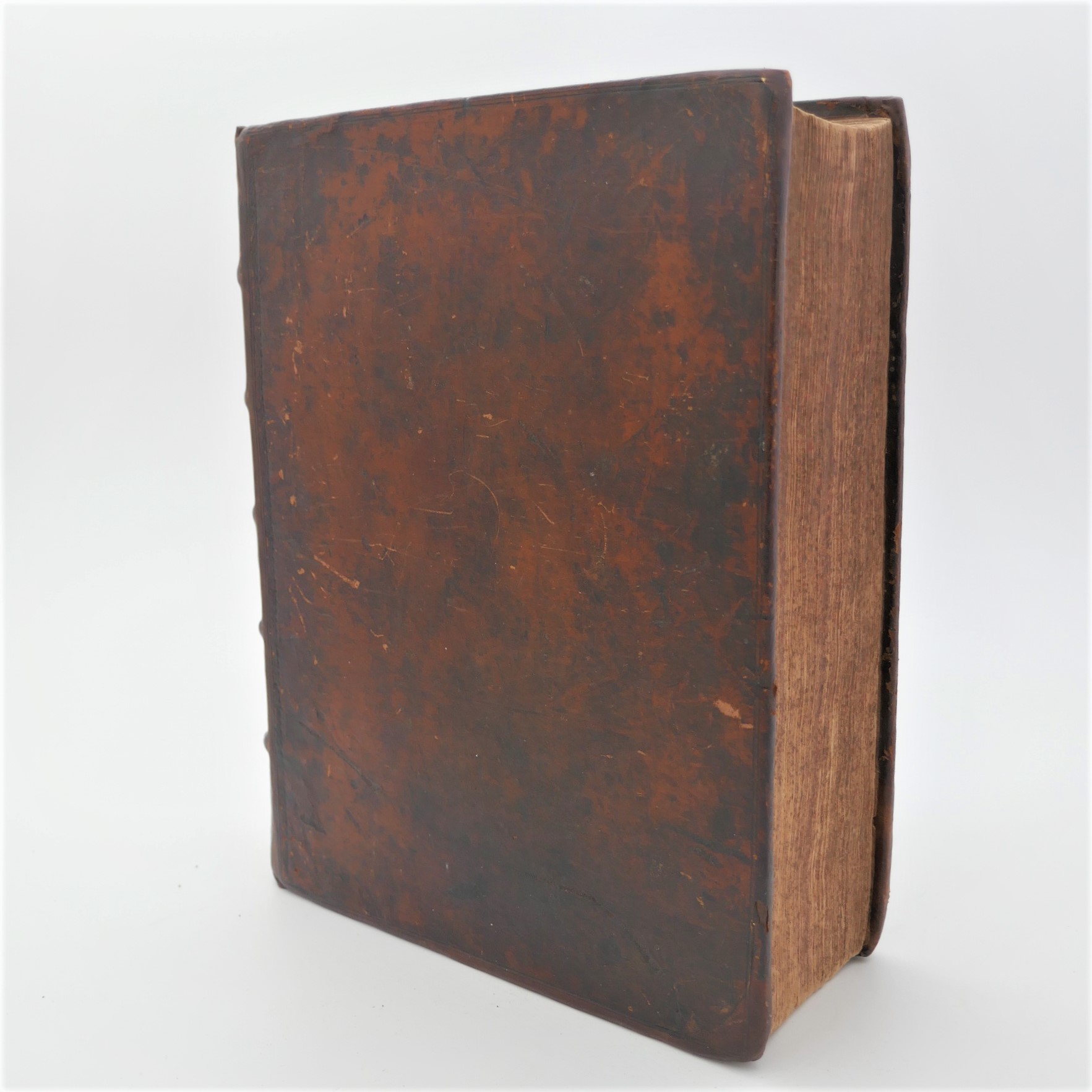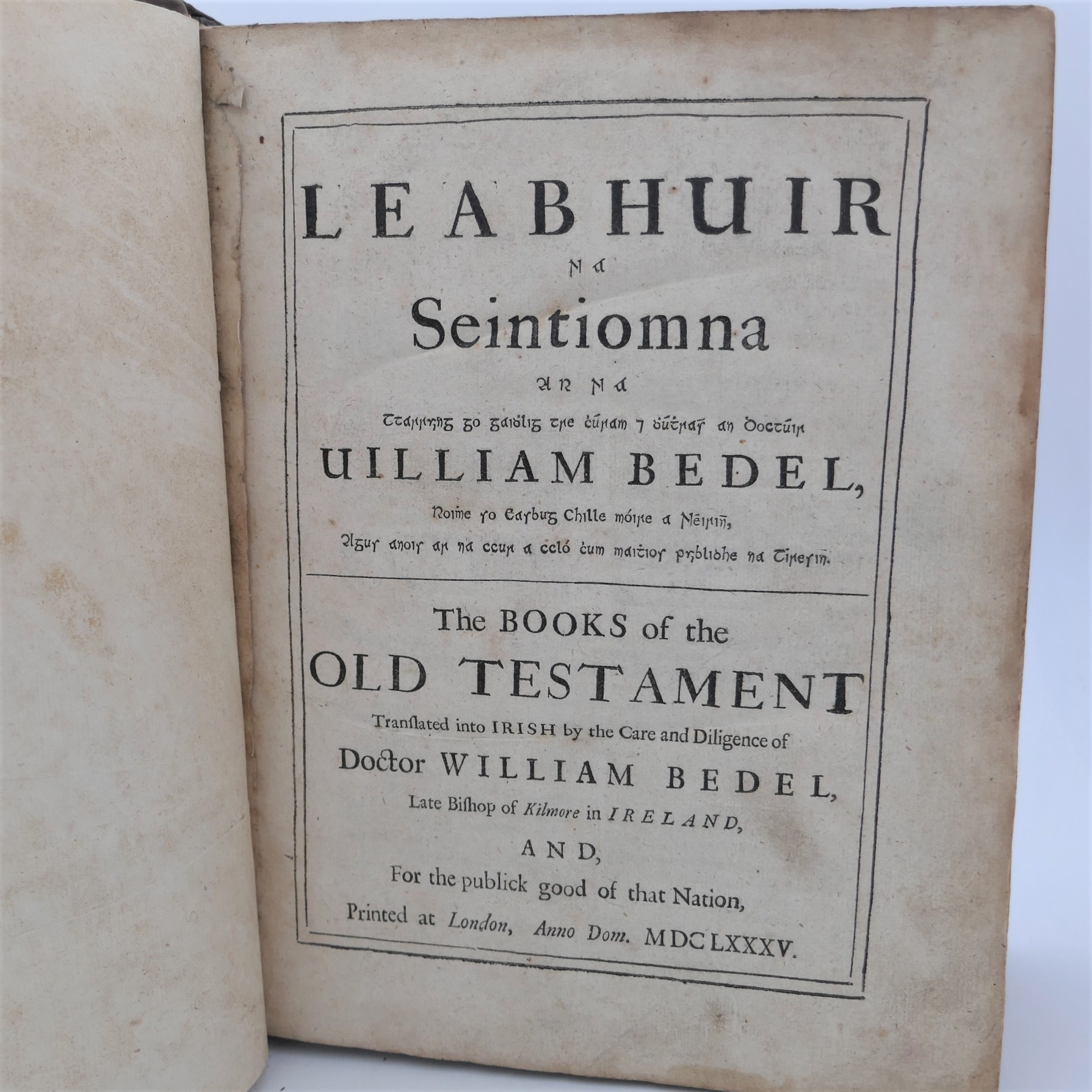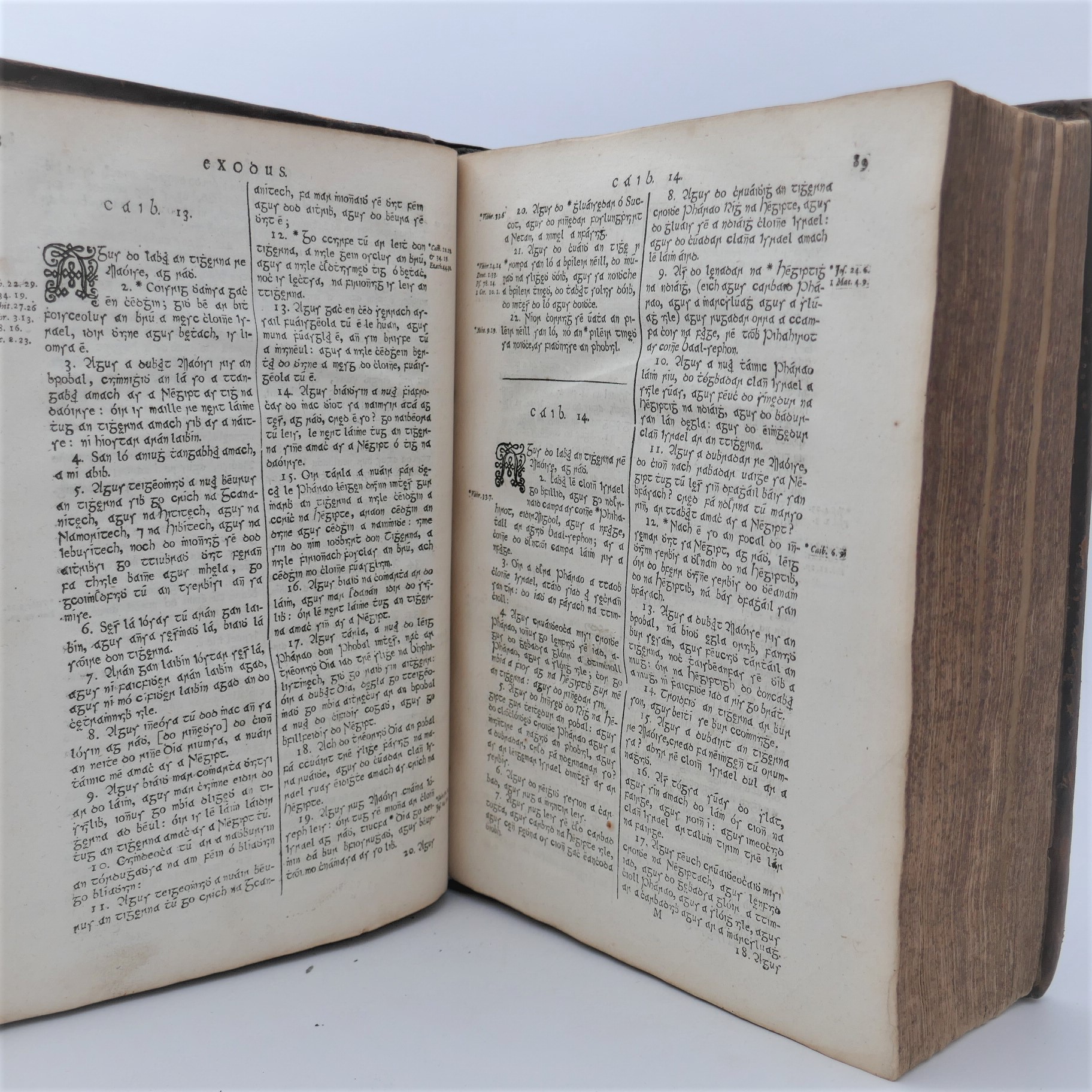Leabhuir na Seintiomna. The Books of the Old Testament. First Edition (1685)
Book ID: 63538
Price: €3,800.00
Leabhuir na Seintiomna. The Books of the Old Testament Translated into Irish by the Care and Diligence of Doctor William Bedel, Late Bishop of Kilmore in Ireland and for the Publick Good of that Nation. London: 1685. First Edition. Pp, 1142. Bound in contemporary calf, raised bands, without title labels, boards rubbed and marked, rebacked preserving old spine, corners and some edges repaired. Lacks initial and final blanks, light soiling or water-staining to a few leaves but generally clean, worming to lower margin towards end. Housed in collector’s clamshell box. [Wing B2759A].
Title in English and Irish, with text in Irish printed in double columns throughout.
William Bedel’s translation of the Old Testament was first published in 1685. This translation made by Bedel (1571-1642), Bishop of Kilmore, with the assistance of Murtagh King and Dennis O’Sheridan, was not published until some 40 years after Bedel’s death, and 83 years after the first edition of the New Testament in Irish (Dublin, 1602)*. In 1571 an Irish alphabet and catechism, both printed by John O’Kearney, were published. The Irish characters used for these were also used to print the 1602 edition of the New Testament.The types were used from time to time until the mid-seventeenth century, however in August 1680 the Bishop of Meath, Henry Jones, wrote to Robert Boyle, saying that he had the manuscript of Bedel’s translation of the Old Testament, but lamenting that the ‘Irish letters stamped for the first printing here [in Ireland] of the common prayer and new testament’ had disappeared. It was for this reason that Moxon in London was commissioned to cut a new Irish type (small pica). The second printing of the New Testament (1681) and Bedell’s 1685 edition of the Old Testament (revised by Andrew Sall and Narcissus Marsh) were published using the Moxon type.
*The first edition of the New Testament in Irish was published in 1602 from the original Greek, and is attributed to William Daniell (or Huilliam O’Domhnuill, d. 1628), it was conceived and paid for by Elizabeth 1. However it was not until the end of her reign and the accession of James 1 to the throne of England that it appeared.
Out of stock







